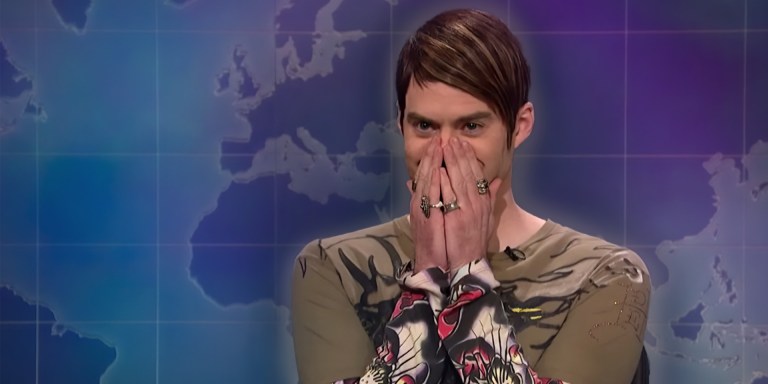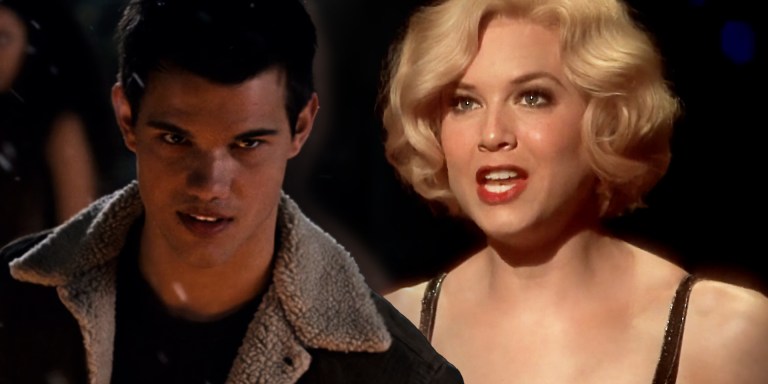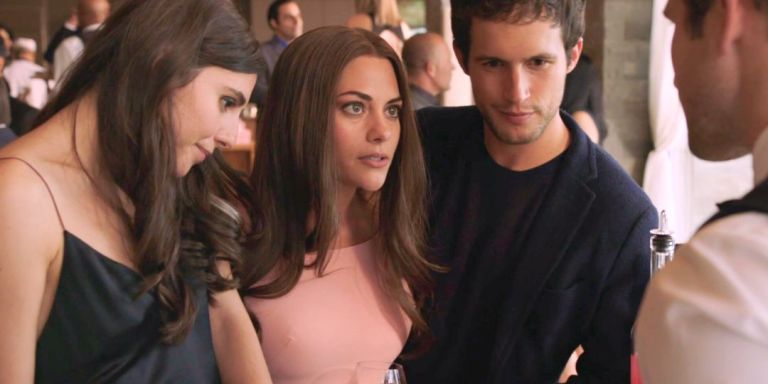[youtube=http://www.youtube.com/watch?v=LrUvu1mlWco&w=584&h=390]
After last night’s VMA debacle, I expected that the internet would be talking about Miley Cyrus today — a pre-manufactured scandal that your grandmother might be outraged about. A pre-made punching bag if there ever were one, Cyrus’ performance with Robin Thicke has been quickly criticized — labeled a “cultural embarrassment” and “trashy.”
It’s weird — because I agree that we should be very upset about what took place on stage last night — but not for the reasons everyone seems to be talking about. It’s Cyrus’ body that has become the conversation today, one that erases her agency as a woman who defines her own sexuality. It’s a highly conservative backlash that totally misses the point.
As a friend put it, we shouldn’t be focusing on Miley’s body. We should be criticizing her politics.
This isn’t the first time Cyrus has courted controversy for dancing provocatively, nor will it be the last. However, the difference between Cyrus twerking onstage and playing black lady grabass and dancing on an ice cream truck is that the latter is at her own expense. Last night’s performance (with the help of 2 Chains) made black women’s bodies into a spectacle — used as a tool of objectification.
Like the “We Can’t Stop” video, the onstage choreography leered over the female dancers’ posteriors aka the vehicles of “twerking.” In “We Can’t Stop,” the black women show Cyrus how to twerk in order to give Cyrus the prerequisite street cred. Like the black women in “The Help,” they were props for a white woman’s narrative, the discovery of herself and her own identity. But last night, the black women were barely part of the scene at all, pushed to the side or the background, until they were called upon to be grabbed by Ms. Cyrus.
She has the right to hypersexualize herself, but Miley shouldn’t exploit others in the process. That’s not being Miley. That’s being naive.
The message of “We Can’t Stop” is that Miley Cyrus is going to do whatever she wants — because she’s a grown adult now — but we have to ask who that freedom affects, especially when there are obvious issues of appropriation, privilege and access to be taken into account. Like “Blurred Lines,” “We Can’t Stop” heavily borrows from black culture, using black folks as less supporting players than fetishized props. Both Cyrus and Thicke are second-generation celebrities, born on third base, and taking advantage of that position to steal home.
And it’s working. Cyrus has made twerking into a cultural phenomenon, and both artists are outselling their black contemporaries by a wide margin. “Blurred Lines” will easily be the biggest song of the year. It will be #1 on Billboard until we die. It’s currently outpacing both of Mackelmore’s breakout hits, an artist who at least has been reflective about his own place as a white artist in a historically black genre. You’ll never hear a song like “White Privilege” from Miley Cyrus.
Hip hop is becoming increasingly dominated by white folks, and even though Cyrus’ new album seems to be more pop than R&B, her career reinvention is focused on giving the former tween star an “urban” vibe. In “We Can’t Stop,” Cyrus sings “Can’t you see its we who ‘bout that life,” a lyric that is as awkwardly phrased as it is ridiculous. What kind of life does Cyrus think she’s about? This is the girl who, at the time of recording “Party in the USA,” had never even heard a Jay-Z song.
She doesn’t even know that life. Cyrus’s new image is a cheap costume to sell records, as authentic as dressing up as Pocahontas for Halloween. It’s the musical equivalent of a Che Guevara t-shirt.
However, Cyrus is hardly alone in borrowing from black artists, and cultural appropriation has become the new norm amongst pop royalty. Ke$ha used bling and cornrows in the “Crazy Kids” video to show how wild she is, and Lady Gaga’s new album was marketed on “burqa swag,” using Muslim bodies to hock her shit. It’s not about tipping the hat or “empowering other cultures.” It’s a glorified advertising campaign. Burqa swag came instantly hashtagged, and Lady Gaga’s PR team encouraged her cult of followers (the “Little Monsters”) to help promote the album themselves.
If this is about “power,” it’s only about the power of some to represent and exploit others, like Edward Said in motion. Even Katy Perry is wearing grills now.
Although cultural appropriation is hardly new, the modern pioneer of what we are seeing was Gwen Stefani, whose brief time in Japan made her some sort of harajuku expert. Stefani’s Love Angel Music Baby album borrowed heavily from Japanese culture, even using the much-advertised harajuku girls as her own private entourage. They went with her everywhere and were heavily featured in her work. The whole thing was silly, racist and wildly Orientalist — because Asian people are not pets — but at least Stefani recognized herself as an outsider and a “fan” of the culture, rather than a participant. On the record, Stefani sings her fandom, “I’m fascinated by the Japanese fashion scene/Just an American girl in the Tokyo streets.”
Japanese culture was a fad for Stefani, just like Islamic culture is for Lady Gaga, but the difference is the idea of ownership. Gaga doesn’t even have the decency to even involve Muslim women in the conversation, and you don’t see girls in burqas promoting her album with her. They’re merely this season’s hottest trend, the meat dress of 2013.
In a way, all of this is the exact inverse of what we saw in the 2000s, where black artists accounted for many of the most successful songs and would bring white artists in on guest vocals to appeal to a broader audience. White people were the accessories — which at least makes sense, as they are bystanders in the hip-hop genre. When Justin Timberlake started out making his solo tunes, it was Timbaland that was the real star, the prolific producer and hip-hop artist responsible for many of the decade’s biggest tracks.
But now that folks like Justin have made a name for themselves in the R&B genre, black folks are merely special guest stars — like Snoop Dogg on pop star Katy Perry’s “California Girls,” Kanye West on “E.T” or Will.i.am on “Crazy Kids.” “Blurred Lines” even doubles up with T.I. and Pharrell, but in Cyrus’ music, black voices are all but absent.
It’s easy to pounce on Miley Cyrus — because people seem to have it out for her — but we have to look at the larger issues at play and their effects. This is an industry, after all.
When Miley Cyrus’ video first premiered, Jezebel’s Dodai Stewart wrote, “In a white-centric world, putting white women quite literally in the center of the frame while women of color are off to the side is a powerful, disrespectful visual message,” and Brittany Julious cited Geoff Dyer to ask who isn’t in the frame. What happens when black people get left out of the picture?
The other day I called my white grandmother after seeing The Butler. I didn’t like it very much (because that movie does not know what casting is), but someone of Oprah’s target audience, I thought she might enjoy it. The moment I brought up the film she responded, “I’m so sick of those movies being made.” Knowing where this was headed but ready to give her the benefit of a doubt, I said, “What kinds of movies, Nana? Oscar-bait movies? Yeah, I hate those, too.”
I sighed, knowing what was about to happen. I waited. After considering her answer, she broke the silence, finally. She said, “No, movies about how bad they had it.”
I wanted to ask when she had been lynched or how many years she had been a slave. I wanted to ask her how many segregated schools she had to fight to integrate or “colored” fountains at which she had to drink. I wanted to ask how many movies she had really seen about the civil rights struggle (like, ever) or if she knew how few movies were being made by black people at all. Had she listened to a black musician recently? If so, had she heard him sing about racism? Or was it simply a nice message that was catered to her, one she was ready to hear? Or was she listening to a white person singing a black man’s song?
That’s the thing about making black histories invisible. After awhile, white folks might not even realize they’re gone. It’s not just Cyrus that’s being Miley. We all are. ![]()





